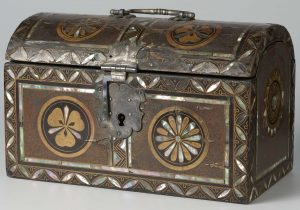Recreational research into Feudal Japan
Posts tagged helmets
Resource: the Rijksmuseum
Jun 30th (a Shakkō (赤口))
I recently discovered that the Rijksmuseum, the Dutch national museum, has their collection searchable online with freely-usable images. They’ve got some cool stuff. Here are some highlights, focused on Japanese heraldry.
<img src="http://fireflies.xavid.us/wp-content/uploads/2016/06/Screen-Shot-2016-06-30-at-13.48 traitement viagra naturel.50-300×114.png” alt=”Screen Shot 2016-06-30 at 13.48.50″ width=”300″ height=”114″ class=”alignnone size-medium wp-image-594″ srcset=”http://fireflies.xavid.us/wp-content/uploads/2016/06/Screen-Shot-2016-06-30-at-13.48.50-300×114.png 300w, http://fireflies.xavid.us/wp-content/uploads/2016/06/Screen-Shot-2016-06-30-at-13.48.50-768×293.png 768w, http://fireflies.xavid.us/wp-content/uploads/2016/06/Screen-Shot-2016-06-30-at-13.48.50-1024×390.png 1024w, http://fireflies.xavid.us/wp-content/uploads/2016/06/Screen-Shot-2016-06-30-at-13.48.50.png 1506w” sizes=”(max-width: 300px) 100vw, 300px” /> 



These details from “Arrival of a Portuguese ship”, c. 1600, show mon used on noren (fabric dividers). Of particular interest is the double bird mon that is reduced to a single bird on the smaller noren, showing a notable type of variation, and also the differences of background color between the large and small noren.
This box, from 1600-1650, shows wood sorrel and chrysanthemum mon with a “seven treasures” background pattern. The use of mother-of-pearl creates an interesting three-color effect, with two colors for the mon and one for the background.
These fabric fragments, from 1573–1591, 1575–1600, and 1644–1648, respectively, show how mon designs could be used in embroidery.
And finally, this heraldic helmet with enormous gold ears is from 1575–1600.
I’m definitely a fan of museums making their collections widely available like this, having used the online collection from the Met extensively for context in my O-umajirushi translation. Enjoy the collection!





